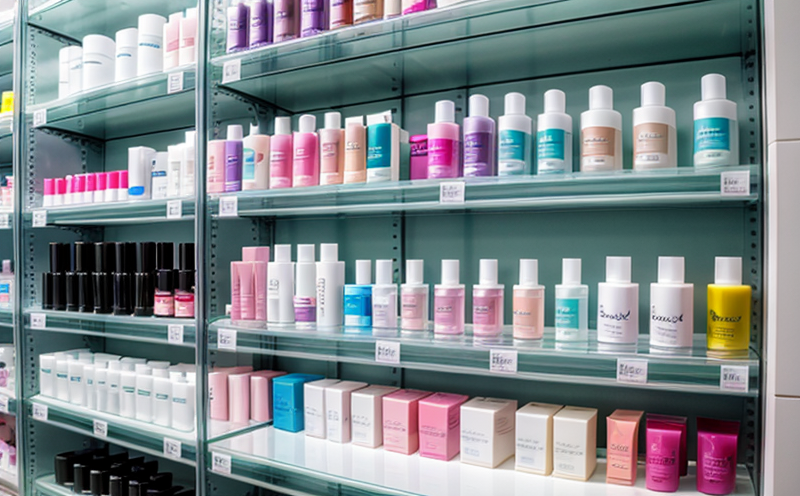Melting Point Stability Testing in Lipsticks
The melting point stability testing of lipsticks is a critical quality assurance process that ensures the cosmetic formulation meets its intended performance and regulatory standards. This testing method evaluates how well the lipstick maintains its physical properties, including consistency and color, under various temperature conditions. Understanding this aspect is vital for cosmetic manufacturers as it impacts consumer satisfaction and product longevity on store shelves.
The melting point stability test involves subjecting a lipstick sample to controlled heating at specific rates until it fully melts. This process helps identify any potential issues that could arise due to the formulation's chemical composition or manufacturing processes. By conducting this test, cosmetic companies can ensure their products remain stable and meet quality expectations throughout their shelf life.
One of the key factors in melting point stability testing is the choice of instrumentation used for the procedure. The most commonly employed devices are differential scanning calorimeters (DSC) and thermogravimetric analyzers (TGA). These instruments provide precise measurements of heat flow between a sample and an inert reference material as temperature increases, allowing researchers to determine the melting point accurately.
The testing protocol typically involves preparing lipstick samples by carefully weighing out a specified amount according to industry standards such as ISO or ASTM guidelines. Samples are then placed into appropriate containers for analysis within the calorimetric instrument. Once prepared, the sample is exposed gradually to increasing temperatures while continuously monitoring its temperature response using advanced software.
After completing these tests, detailed reports highlighting key findings from each trial run can be generated. These documents often include information about melting points achieved during different stages of heating cycles along with other relevant parameters like enthalpy changes and phase transitions observed throughout the process.
The importance of melting point stability testing cannot be overstated when it comes to producing high-quality lipsticks that maintain their appearance and texture over time. By incorporating rigorous quality assurance measures into production practices, cosmetic manufacturers can build consumer trust while adhering to strict regulatory requirements.
Benefits
The benefits of conducting melting point stability testing extend beyond just ensuring product quality; they also contribute significantly towards enhancing brand reputation and customer satisfaction. Here are some key advantages:
- Informed Decision Making: Reliable data obtained through this type of testing allows manufacturers to make informed decisions regarding formulation adjustments necessary for achieving optimal performance.
- Regulatory Compliance: Ensures that products comply with relevant international standards like ISO, ASTM, EN, and IEC ensuring compliance with regulations governing cosmetic safety.
- Potential Cost Savings: Identifying problematic areas early in the development process helps avoid costly rework or recalls later on.
- Better Consumer Experience: Consistent product quality leads to improved customer experience which translates into higher brand loyalty and sales growth.
In summary, melting point stability testing plays an essential role in maintaining consistent product performance across all batches produced by a company. It provides valuable insights that can help improve not only the immediate batch but also future production runs.
Industry Applications
| Application | Description |
|---|---|
| Cosmetics Manufacturing: | Ensures lipstick formulations remain stable under varying temperature conditions ensuring consistent product quality. |
| Research & Development: | Supports innovation by identifying optimal formulation combinations that enhance stability and performance. |
| Quality Assurance: | Provides objective evidence to support claims made about product longevity and reliability. |
| Supply Chain Management: | Aids in managing inventory by providing data on expected shelf life and potential issues related to temperature exposure. |
| Compliance: | Helps meet regulatory requirements ensuring all products are safe for consumers. |
The melting point stability test is particularly useful in the cosmetics industry where maintaining consistent product quality over extended periods is crucial. Manufacturers can use this information to optimize their production processes and ensure that each batch meets strict quality standards before reaching market shelves.
Competitive Advantage and Market Impact
The ability to conduct thorough melting point stability testing offers significant competitive advantages for cosmetic manufacturers. In today's highly competitive marketplace, where consumers are increasingly concerned about product safety and efficacy, having reliable data on your products' performance can set you apart from competitors.
By demonstrating a commitment to quality through rigorous testing procedures like melting point stability tests, companies signal their dedication to delivering superior products that meet or exceed expectations. This approach fosters trust among customers who are more likely to choose brands they perceive as trustworthy and reliable.
Moreover, such practices enhance brand reputation by reinforcing positive associations with the product line. When consumers know that a particular company consistently produces high-quality cosmetics that maintain their integrity over time, loyalty increases, leading to increased sales and market share gains.
In conclusion, investing in melting point stability testing is not merely an optional extra; it's a strategic necessity for any cosmetic brand seeking long-term success in today’s demanding market environment. It ensures compliance with industry standards while simultaneously enhancing customer satisfaction and building lasting relationships within the industry.





